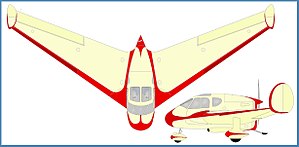사이프
Saiph| 관찰 데이터 Epoch J2000 Equinox J2000 | |
|---|---|
| 콘스텔레이션 | 오리온자리 |
| 적경 | 05h 47m 45.38884s[1] |
| 적위 | - 09° 40° 10.5777°[1] |
| 겉보기 등급(V) | 2.09[2] |
| 특성. | |
| 스펙트럼형 | B0.5 Ia[3] |
| U-B 색지수 | – 1.02[2] |
| B-V 색지수 | – 0.18[2] |
| 변수 유형 | 의심스럽다[4] |
| 아스트로메트리 | |
| 반지름 속도(Rv) | +20.5[5] km/s |
| 고유운동(μ) | RA: +1.46[1] mas/년 Dec.: – 1.28[1] mas/년 |
| 시차()) | 5.04 ± 0.22 mas[1] |
| 거리 | 650 ± 30 ly (표준 ± 9 pc) |
| 절대 등급(MV) | – 6.1[6] |
| 세부 사항 | |
| 덩어리 | 15.50 ± 1.25[7] M☉ |
| 반지름 | 22.2[6] R☉ |
| 광도 | 56,881[7] L☉ |
| 표면 중력(log g) | 2.9gs[6] |
| 온도 | 26,500[6] K |
| 회전 속도(v sin i) | 83[6] km/s |
| 나이 | 11.1 ± 0.5[8] 미르 |
| 기타 명칭 | |
| 데이터베이스 참조 | |
| 심바디 | 데이터. |
사이프 /ˈseff/(오리온자리 카파, 오리온자리 ,)는 오리온자리에서 여섯 번째로 밝은 별이다.오리온의 주 사각형을 구성하는 네 개의 밝은 별 중 남동쪽 모서리에 있는 별입니다.남향의 북반구 관측자는 오리온자리 왼쪽 아래, 북향의 남반구 관측자는 오른쪽 위쪽에 이를 볼 수 있습니다.시차 측정값은 태양으로부터 650광년(200파섹) 떨어진 것으로 추정되며 이는 베텔게우스([1]Betelgeuse)와 거의 같다.겉보기 등급 2.1로 [2]리겔보다 작고 덜 밝지만 표면은 뜨겁다.이 별의 광도는 0.04 [4]등급만큼 약간 변합니다.
명명법
오리온자리 카파(Kappa Orionis)는 이 별의 바이어 명칭이고 오리온자리 53은 플램스티드 명칭이다.전통적인 이름인 사이프는 아랍어 사이프 알 자바에서 유래한 것으로, 말 그대로 거인의 사이프이다.이 이름은 원래 오리온자리 [10]에타에 적용되었다.2016년, 국제천문연맹은 별의 고유 명칭을 목록화하고 표준화하기 위해 별 이름 작업 [11]그룹을 조직했다.2016년 7월[12] WGSN의 첫 번째 회보는 WGSN이 승인한 최초의 두 개의 명칭 묶음의 표를 포함했으며, 이 별에는 이 별에 대한 사이프가 포함되었다.이제 IAU 별명 [13]카탈로그에 등록되었습니다.
17세기 알 아크사시 알 무아케트 달력에서 이 별은 렉바 알 자우자 알 예메니아로 명명되었으며, 라틴어로 "거인의 오른쪽 무릎"[14]으로 번역되었다.
특성.
사이프는 분광형 B0.5 Ia의 초거성이다.광도 등급 'Ia'는 중심핵의 수소 공급을 고갈시키고 주계열에서 벗어난 밝은 초거성을 나타냅니다.사이프는 강한 항성풍을 가지고 있으며 매년 태양 질량의 9.0배−7, 즉 110만 [6]년마다 태양 질량의 10배 정도의 속도로 질량을 잃고 있다.히파르코스와 스펙트럼에 의해 결정된 시차를 조합하면 질량은 태양의 [7]15.50 ± 1.25배, 광도는 56,881배이다.오리온 OB1 성협 구성원의 스펙트럼과 나이를 분석한 결과 질량은 태양의 28배(태양의 31.8배)이며 나이는 620만 [15]년이다.사이프와 같은 큰 별들은 스스로 붕괴하고 초신성으로 [16]폭발할 운명이다.
서양 이외의 천문학 및 문화에서
중국어로 삼성(三星)을 뜻하는 Shnn S),는 사이프, 알니탁, 알닐람, 민타카, 베텔게우스, 벨라트릭스,[17] 리겔로 구성된 별자리를 말한다.따라서 사이프의 중국 이름은 샨시리(Shshn S lili,, 영어: Sixth Star of Three Stars)[18]이다.
호주 북부의 와다만 사람들은 사이프를 검은 머리 [19]파이썬이 협곡을 만들 때 사용했던 구만 굴착 막대기로 여긴다.
레퍼런스
- ^ a b c d e f van Leeuwen, F. (November 2007), "Validation of the new Hipparcos reduction", Astronomy and Astrophysics, 474 (2): 653–664, arXiv:0708.1752, Bibcode:2007A&A...474..653V, doi:10.1051/0004-6361:20078357, S2CID 18759600
- ^ a b c d Crawford, D. L.; Barnes, J. V.; Golson, J. C. (1971), "Four-color, H-beta, and UBV photometry for bright B-type stars in the northern hemisphere", The Astronomical Journal, 76: 1058, Bibcode:1971AJ.....76.1058C, doi:10.1086/111220
- ^ Morgan, W. W.; Keenan, P. C. (1973). "Spectral Classification". Annual Review of Astronomy and Astrophysics. 11: 29–50. Bibcode:1973ARA&A..11...29M. doi:10.1146/annurev.aa.11.090173.000333.
- ^ a b Lefèvre, L.; et al. (November 2009), "A systematic study of variability among OB-stars based on HIPPARCOS photometry", Astronomy and Astrophysics, 507 (2): 11411201, Bibcode:2009A&A...507.1141L, doi:10.1051/0004-6361/200912304
- ^ Wielen, R.; et al. (1999), "Sixth Catalogue of Fundamental Stars (FK6). Part I. Basic fundamental stars with direct solutions", Veröff. Astron. Rechen-Inst. Heidelb, Astronomisches Rechen-Institut Heidelberg, 35 (35): 1, Bibcode:1999VeARI..35....1W
- ^ a b c d e f Crowther, P. A.; Lennon, D. J.; Walborn, N. R. (January 2006), "Physical parameters and wind properties of galactic early B supergiants", Astronomy and Astrophysics, 446 (1): 279–293, arXiv:astro-ph/0509436, Bibcode:2006A&A...446..279C, doi:10.1051/0004-6361:20053685, S2CID 18815761
- ^ a b c Hohle, M. M.; Neuhäuser, R.; Schutz, B. F. (April 2010), "Masses and luminosities of O- and B-type stars and red supergiants", Astronomische Nachrichten, 331 (4): 349, arXiv:1003.2335, Bibcode:2010AN....331..349H, doi:10.1002/asna.200911355, S2CID 111387483
- ^ Tetzlaff, N.; Neuhäuser, R.; Hohle, M. M. (January 2011), "A catalogue of young runaway Hipparcos stars within 3 kpc from the Sun", Monthly Notices of the Royal Astronomical Society, 410 (1): 190–200, arXiv:1007.4883, Bibcode:2011MNRAS.410..190T, doi:10.1111/j.1365-2966.2010.17434.x, S2CID 118629873
- ^ "SAIPH -- Variable Star", SIMBAD, Centre de Données astronomiques de Strasbourg, retrieved 2012-01-12
- ^ Allen, Richard Hinckley (1899). Star-names and their meanings. G. E. Stechert. p. 317.
- ^ "IAU Working Group on Star Names (WGSN)". Retrieved 22 May 2016.
- ^ "Bulletin of the IAU Working Group on Star Names, No. 1" (PDF). Retrieved 28 July 2016.
- ^ "IAU Catalog of Star Names". Retrieved 28 July 2016.
- ^ Knobel, E. B. (June 1895). "Al Achsasi Al Mouakket, on a catalogue of stars in the Calendarium of Mohammad Al Achsasi Al Mouakket". Monthly Notices of the Royal Astronomical Society. 55 (8): 429. Bibcode:1895MNRAS..55..429K. doi:10.1093/mnras/55.8.429.
- ^ Voss, R.; Diehl, R.; Vink, J. S.; Hartmann, D. H. (2010). "Probing the evolving massive star population in Orion with kinematic and radioactive tracers". Astronomy and Astrophysics. 520: 10. arXiv:1005.3827. Bibcode:2010A&A...520A..51V. doi:10.1051/0004-6361/201014408. S2CID 38599952. A51.
- ^ Kaler, James B., "SAIPH (Kappa Orionis)", Stars, University of Illinois, retrieved 2012-01-27
- ^ (in Chinese) 中國星座神話, written by 陳久金.2005년 발행, ISBN 978-986-7332-25-7.
- ^ (중국어) AEEA (천문학 전시회 및 교육 활동)2006년 5월 25일
- ^ Harney, Bill Yidumduma; Cairns, Hugh C. (2004) [2003]. Dark Sparklers (Revised ed.). Merimbula, New South Wales: Hugh C. Cairns. p. 139. ISBN 0-9750908-0-1.



